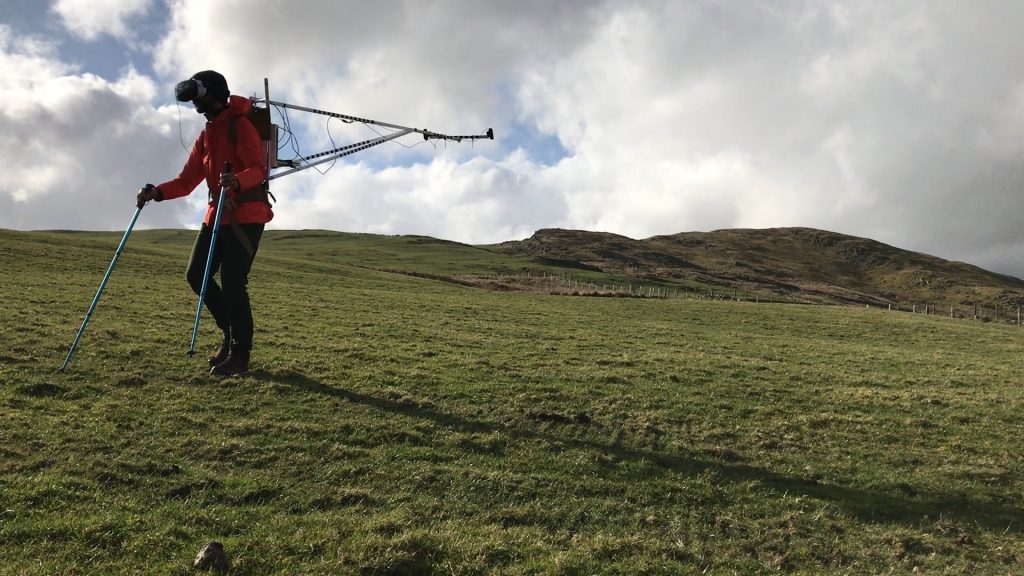
Autoscope builds on laboratory-based simulations of out of body experiences; the portable device allows the participant to freely navigate the world, experiencing themselves in 3rd person, as part of the landscape via a live video feed to a head-mounted display. The visual mechanisms are important in this illusion, but tactile and sonic stimuli further strengthen the effects.

Autoscopy can be described as the disembodied perception of seeing one own body from an elevated or distanced location outside the body. The phenomena of the ‘out of body experience’ during heightened states of heightened consciousness or near-death experience tend to have spiritual or shamanistic connotations, but in recent times science has done much to demystify this phenomenon, identifying the neural mechanisms responsible. The ‘Autoscope’ prototype builds on recent laboratory-based simulations of the ‘out of body experience’ and the ‘body-swap illusion’.
‘Autoscope’ allows the participant to freely navigate the world experiencing themselves in 3rd person, as an actor within the landscape, via a live video feed to a head-mounted display. This visual mechanism is further reinforced by tactile and sonic stimuli. A microphone relays sounds from the point of view of the camera, while a servo motor syncs a taping mechanism on the chest, with a visual cue seen through the camera. These multimodal sensory mechanisms combine to further strengthen the illusion.
The device can be considered as a critique of increasingly prolific immersive virtual art, seductive environments typically experienced through head-mounted displays. Autoscope aims to expose and subvert these otherwise autonomous perceptual mechanisms, and turn the focus back to the plastic nature of the ‘self’, drawing our attention to our own sensorial vulnerabilities, re-addressing what we consider to be ‘normal’ perception.
